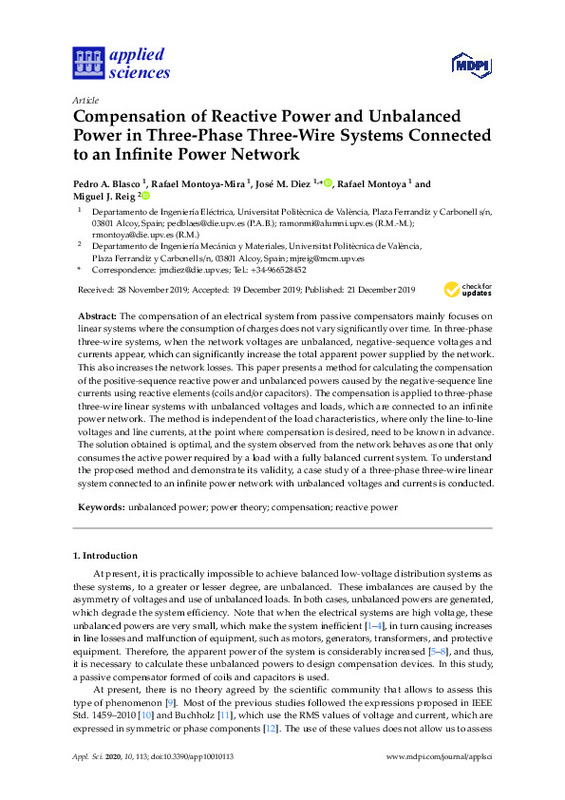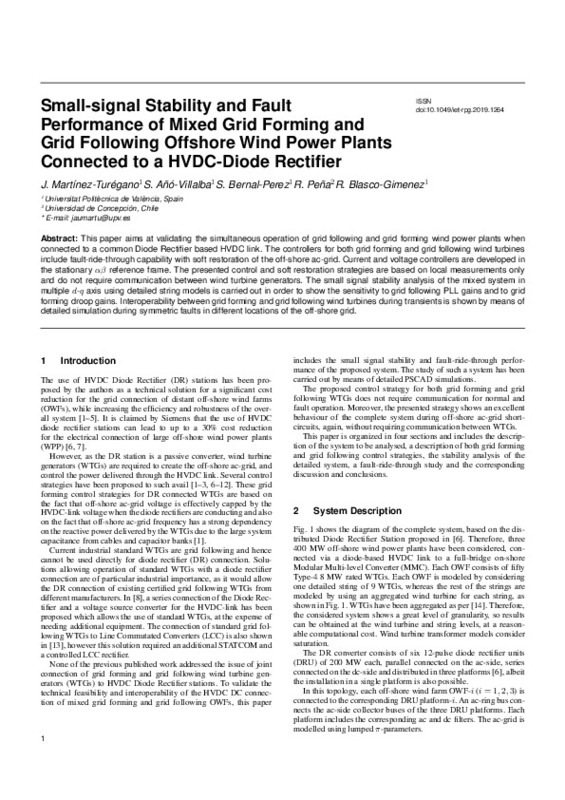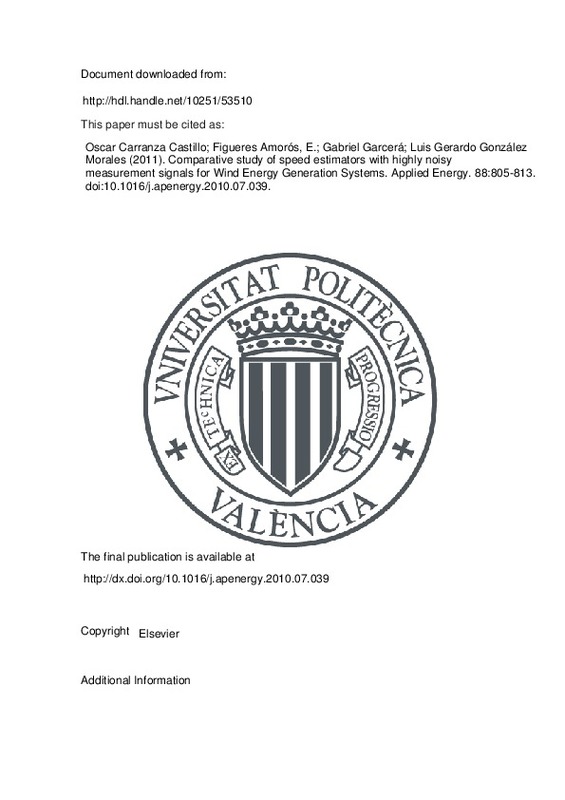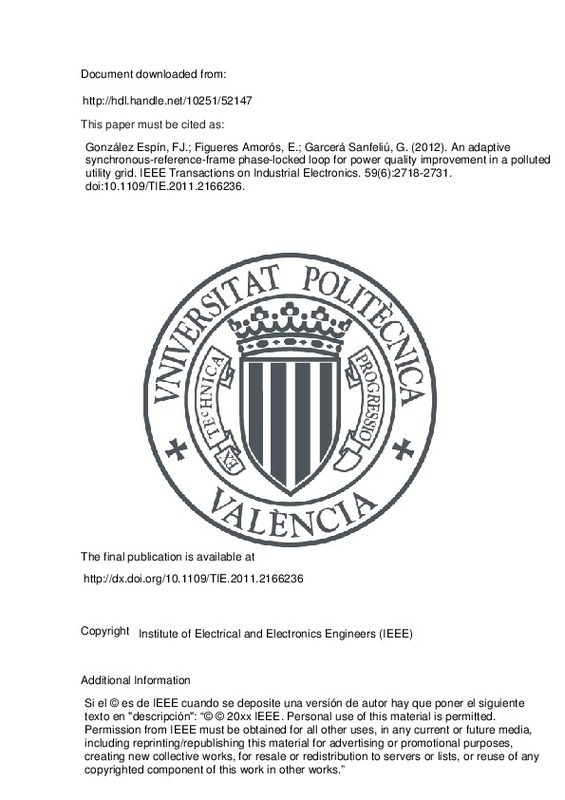JavaScript is disabled for your browser. Some features of this site may not work without it.
Buscar en RiuNet
Listar
Mi cuenta
Estadísticas
Ayuda RiuNet
Admin. UPV
Compensation of Reactive Power and Unbalanced Power in Three-Phase Three-Wire Systems Connected to an Infinite Power Network
Mostrar el registro sencillo del ítem
Ficheros en el ítem
| dc.contributor.author | Blasco Espinosa, Pedro Angel
|
es_ES |
| dc.contributor.author | Montoya-Mira, Rafael
|
es_ES |
| dc.contributor.author | Diez-Aznar, José-Manuel
|
es_ES |
| dc.contributor.author | Montoya Villena, Rafael
|
es_ES |
| dc.contributor.author | Reig-Pérez, Miguel Jorge
|
es_ES |
| dc.date.accessioned | 2020-05-29T03:32:18Z | |
| dc.date.available | 2020-05-29T03:32:18Z | |
| dc.date.issued | 2019-12-21 | es_ES |
| dc.identifier.uri | http://hdl.handle.net/10251/144557 | |
| dc.description.abstract | [EN] The compensation of an electrical system from passive compensators mainly focuses on linear systems where the consumption of charges does not vary significantly over time. In three-phase three-wire systems, when the network voltages are unbalanced, negative-sequence voltages and currents appear, which can significantly increase the total apparent power supplied by the network. This also increases the network losses. This paper presents a method for calculating the compensation of the positive-sequence reactive power and unbalanced powers caused by the negative-sequence line currents using reactive elements (coils and/or capacitors). The compensation is applied to three-phase three-wire linear systems with unbalanced voltages and loads, which are connected to an infinite power network. The method is independent of the load characteristics, where only the line-to-line voltages and line currents, at the point where compensation is desired, need to be known in advance. The solution obtained is optimal, and the system observed from the network behaves as one that only consumes the active power required by a load with a fully balanced current system. To understand the proposed method and demonstrate its validity, a case study of a three-phase three-wire linear system connected to an infinite power network with unbalanced voltages and currents is conducted. | es_ES |
| dc.description.sponsorship | This work is supported by the Spanish Ministry of Science, Innovation and Universities (MICINN) and the European Regional Development Fund (ERDF) under Grant RTI2018-100732-B-C21. | es_ES |
| dc.language | Inglés | es_ES |
| dc.publisher | MDPI AG | es_ES |
| dc.relation.ispartof | Applied Sciences | es_ES |
| dc.rights | Reconocimiento (by) | es_ES |
| dc.subject | Unbalanced power | es_ES |
| dc.subject | Power theory | es_ES |
| dc.subject | Compensation | es_ES |
| dc.subject | Reactive power | es_ES |
| dc.subject.classification | INGENIERIA DE LOS PROCESOS DE FABRICACION | es_ES |
| dc.subject.classification | INGENIERIA ELECTRICA | es_ES |
| dc.title | Compensation of Reactive Power and Unbalanced Power in Three-Phase Three-Wire Systems Connected to an Infinite Power Network | es_ES |
| dc.type | Artículo | es_ES |
| dc.identifier.doi | 10.3390/app10010113 | es_ES |
| dc.relation.projectID | info:eu-repo/grantAgreement/AEI/Plan Estatal de Investigación Científica y Técnica y de Innovación 2017-2020/RTI2018-100732-B-C21/ES/CARGADORES DE BATERIAS BIDIRECCIONALES PARA LA INTEGRACION EN MICRORREDES DE VEHICULOS ELECTRICOS Y ESTACIONES DE CARGA ULTRARRAPIDA CON BATERIAS DE RESPALDO/ | es_ES |
| dc.rights.accessRights | Abierto | es_ES |
| dc.contributor.affiliation | Universitat Politècnica de València. Departamento de Ingeniería Eléctrica - Departament d'Enginyeria Elèctrica | es_ES |
| dc.contributor.affiliation | Universitat Politècnica de València. Departamento de Ingeniería Mecánica y de Materiales - Departament d'Enginyeria Mecànica i de Materials | es_ES |
| dc.description.bibliographicCitation | Blasco Espinosa, PA.; Montoya-Mira, R.; Diez-Aznar, J.; Montoya Villena, R.; Reig-Pérez, MJ. (2019). Compensation of Reactive Power and Unbalanced Power in Three-Phase Three-Wire Systems Connected to an Infinite Power Network. Applied Sciences. 10(1):1-17. https://doi.org/10.3390/app10010113 | es_ES |
| dc.description.accrualMethod | S | es_ES |
| dc.relation.publisherversion | https://doi.org/10.3390/app10010113 | es_ES |
| dc.description.upvformatpinicio | 1 | es_ES |
| dc.description.upvformatpfin | 17 | es_ES |
| dc.type.version | info:eu-repo/semantics/publishedVersion | es_ES |
| dc.description.volume | 10 | es_ES |
| dc.description.issue | 1 | es_ES |
| dc.identifier.eissn | 2076-3417 | es_ES |
| dc.relation.pasarela | S\403495 | es_ES |
| dc.contributor.funder | Agencia Estatal de Investigación | es_ES |
| dc.contributor.funder | Ministerio de Ciencia e Innovación | es_ES |
| dc.description.references | Emanuel, A. E. (1993). On the definition of power factor and apparent power in unbalanced polyphase circuits with sinusoidal voltage and currents. IEEE Transactions on Power Delivery, 8(3), 841-852. doi:10.1109/61.252612 | es_ES |
| dc.description.references | Willems, J. L. (2004). Reflections on Apparent Power and Power Factor in Nonsinusoidal and Polyphase Situations. IEEE Transactions on Power Delivery, 19(2), 835-840. doi:10.1109/tpwrd.2003.823182 | es_ES |
| dc.description.references | Emanuel, A. E. (1999). Apparent power definitions for three-phase systems. IEEE Transactions on Power Delivery, 14(3), 767-772. doi:10.1109/61.772313 | es_ES |
| dc.description.references | Czarnecki, L. S. (1994). Misinterpretations of some power properties of electric circuits. IEEE Transactions on Power Delivery, 9(4), 1760-1769. doi:10.1109/61.329509 | es_ES |
| dc.description.references | Kersting, W. H. (2001). Causes and effects of unbalanced voltages serving an induction motor. IEEE Transactions on Industry Applications, 37(1), 165-170. doi:10.1109/28.903142 | es_ES |
| dc.description.references | Pillay, P., & Manyage, M. (2006). Loss of Life in Induction Machines Operating With Unbalanced Supplies. IEEE Transactions on Energy Conversion, 21(4), 813-822. doi:10.1109/tec.2005.853724 | es_ES |
| dc.description.references | Poblador, M. L. A., & Lopez, G. A. R. (2013). Power calculations in nonlinear and unbalanced conditions according to IEEE Std 1459-2010. 2013 Workshop on Power Electronics and Power Quality Applications (PEPQA). doi:10.1109/pepqa.2013.6614957 | es_ES |
| dc.description.references | Langella, R., Testa, A., & Emanuel, A. E. (2012). Unbalance Definition for Electrical Power Systems in the Presence of Harmonics and Interharmonics. IEEE Transactions on Instrumentation and Measurement, 61(10), 2622-2631. doi:10.1109/tim.2012.2209909 | es_ES |
| dc.description.references | Kukačka, L., Zissis, G., Kolář, M., Dupuis, P., & Kraus, J. (2016). Review of AC power theories under stationary and non-stationary, clean and distorted conditions. IET Generation, Transmission & Distribution, 10(1), 221-231. doi:10.1049/iet-gtd.2015.0713 | es_ES |
| dc.description.references | Chicco, G., Postolache, P., & Toader, C. (2007). Analysis of Three-Phase Systems With Neutral Under Distorted and Unbalanced Conditions in the Symmetrical Component-Based Framework. IEEE Transactions on Power Delivery, 22(1), 674-683. doi:10.1109/tpwrd.2006.887095 | es_ES |
| dc.description.references | Paap, G. C. (2000). Symmetrical components in the time domain and their application to power network calculations. IEEE Transactions on Power Systems, 15(2), 522-528. doi:10.1109/59.867135 | es_ES |
| dc.description.references | Czarnecki, L. S. (1992). Minimisation of unbalanced and reactive currents in three-phase asymmetrical circuits with nonsinusoidal voltage. IEE Proceedings B Electric Power Applications, 139(4), 347. doi:10.1049/ip-b.1992.0041 | es_ES |
| dc.description.references | San-Yi Lee, & Chi-Jui Wu. (1993). On-line reactive power compensation schemes for unbalanced three phase four wire distribution feeders. IEEE Transactions on Power Delivery, 8(4), 1958-1965. doi:10.1109/61.248308 | es_ES |
| dc.description.references | Czarnecki, L. S. (1994). Supply and loading quality improvement in sinusoidal power systems with unbalanced loads supplied with asymmetrical voltage. Archiv für Elektrotechnik, 77(3), 169-177. doi:10.1007/bf01573892 | es_ES |
| dc.description.references | Sainz, L., Caro, M., & Caro, E. (2009). Analytical Study of the Series Resonance in Power Systems With the Steinmetz Circuit. IEEE Transactions on Power Delivery, 24(4), 2090-2098. doi:10.1109/tpwrd.2009.2028790 | es_ES |
| dc.description.references | Otto, R. A., Putman, T. H., & Gyugyi, L. (1978). Principles and Applications of Static, Thyristor-Controlled Shunt Compensators. IEEE Transactions on Power Apparatus and Systems, PAS-97(5), 1935-1945. doi:10.1109/tpas.1978.354690 | es_ES |
| dc.description.references | Czarnecki, L. S. (1989). Reactive and unbalanced currents compensation in three-phase asymmetrical circuits under nonsinusoidal conditions. IEEE Transactions on Instrumentation and Measurement, 38(3), 754-759. doi:10.1109/19.32187 | es_ES |
| dc.description.references | Czarnecki, L. S. (1988). Orthogonal decomposition of the currents in a 3-phase nonlinear asymmetrical circuit with a nonsinusoidal voltage source. IEEE Transactions on Instrumentation and Measurement, 37(1), 30-34. doi:10.1109/19.2658 | es_ES |
| dc.description.references | Willems, J. L. (2007). Current compensation in three-phase power systems. European Transactions on Electrical Power, 3(1), 61-66. doi:10.1002/etep.4450030110 | es_ES |
| dc.description.references | Origa de Oliveira, L. C., Barros Neto, M. C., & de Souza, J. B. (s. f.). Load compensation in four-wire electrical power systems. PowerCon 2000. 2000 International Conference on Power System Technology. Proceedings (Cat. No.00EX409). doi:10.1109/icpst.2000.898206 | es_ES |
| dc.description.references | Jeon, S.-J., & Willems, J. L. (2011). Reactive power compensation in a multi-line system under sinusoidal unbalanced conditions. International Journal of Circuit Theory and Applications, 39(3), 211-224. doi:10.1002/cta.629 | es_ES |
| dc.description.references | Leon-Martinez, V., & Montanana-Romeu, J. (2014). Representation of load imbalances through reactances. Application to working standards. 2014 16th International Conference on Harmonics and Quality of Power (ICHQP). doi:10.1109/ichqp.2014.6842894 | es_ES |
| dc.description.references | Czarnecki, L. S., & Haley, P. M. (2015). Unbalanced Power in Four-Wire Systems and Its Reactive Compensation. IEEE Transactions on Power Delivery, 30(1), 53-63. doi:10.1109/tpwrd.2014.2314599 | es_ES |











